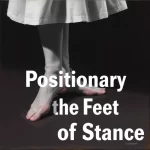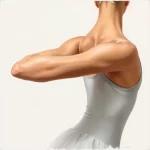Turning Terms in Ballet: Pirouette, Chaîné, Fouetté

Introduction
Ballet, a classical dance form that originated during the Italian Renaissance and later developed in France and Russia, is renowned for its grace, precision, and intricate movements. Among the many techniques that dancers must master, turning is one of the most challenging and visually captivating. This article delves into three fundamental turning terms in ballet: Pirouette, Chaîné, and Fouetté. Each of these turns has its unique characteristics and requires a combination of strength, balance, and technique. Understanding these turns not only enhances appreciation for the art form but also provides insight into the rigorous training that ballet dancers undergo.
Pirouette
Definition and Origin
The term pirouette comes from the French word for “spin” or “whirl.” It is a complete turn of the body on one foot, either on pointe (the tips of the toes) or demi-pointe (the ball of the foot). Pirouettes are a fundamental element in ballet and are often used to showcase a dancer’s technical prowess and control.
Technique
Executing a perfect pirouette requires a combination of balance, strength, and coordination. Here are the key elements:
- Preparation: The dancer usually begins in a fourth position, with one foot in front of the other and the knees slightly bent.
- Spotting: To maintain balance and avoid dizziness, dancers use a technique called spotting. This involves fixing the eyes on a single point and whipping the head around quickly to refocus on that point with each turn.
- Core Strength: A strong core is essential for maintaining balance and control during the turn.
- Arm and Leg Position: The arms are typically held in first position (rounded in front of the body) or second position (extended to the sides), while the working leg is brought up to a passé position (foot placed near the knee of the supporting leg).
Types of Pirouettes
There are several variations of pirouettes, each with its own unique challenges:
- En Dehors: Turning outward, away from the supporting leg.
- En Dedans: Turning inward, toward the supporting leg.
- Multiple Pirouettes: Advanced dancers can perform multiple consecutive turns, often up to three or more.
Chaîné
Definition and Origin
The term chaîné comes from the French word for “chain” or “link.” Chaîné turns are a series of rapid, consecutive half-turns performed on both feet, creating a “chain” of turns. These turns are often used to travel across the stage quickly and smoothly.
Technique
Chaîné turns require precision and speed. Here are the key elements:
- Footwork: The dancer alternates between stepping on the right and left foot, with each step involving a half-turn.
- Spotting: As with pirouettes, spotting is crucial to maintain balance and direction.
- Body Alignment: The body must remain aligned, with the shoulders and hips square to the direction of travel.
- Arm Position: The arms are typically held in first position or extended to the sides in second position.
Applications in Choreography
Chaîné turns are often used in ballet choreography to create dynamic movement across the stage. They can be performed in a straight line, in a circle, or in various patterns, adding versatility to a dancer’s repertoire.
Fouetté
Definition and Origin
The term fouetté comes from the French word for “whipped.” Fouetté turns are characterized by a whipping motion of the working leg, which propels the dancer into a series of rapid turns. These turns are often performed en pointe and are a hallmark of advanced ballet technique.
Technique
Fouetté turns are among the most challenging in ballet. Here are the key elements:
- Preparation: The dancer typically begins in a plié (bent knees) position, with the working leg extended to the front or side.
- Whipping Motion: The working leg is whipped around to the side and then brought into a passé position, while the supporting leg rises onto pointe or demi-pointe.
- Spotting: As with other turns, spotting is essential to maintain balance and direction.
- Core Strength: A strong core is crucial for maintaining control and stability during the rapid turns.
Types of Fouetté Turns
There are several variations of fouetté turns, each with its own unique challenges:
- Fouetté en Tournant: A series of consecutive fouetté turns, often performed in a circle.
- Fouetté Rond de Jambe en Tournant: The working leg performs a rond de jambe (circular movement) while the dancer turns.
- Fouetté Sauté: A jumping fouetté turn, adding an extra level of difficulty.
FAQ
What is the difference between a pirouette and a fouetté?
A pirouette is a complete turn of the body on one foot, either on pointe or demi-pointe, and can be performed en dehors (outward) or en dedans (inward). A fouetté, on the other hand, involves a whipping motion of the working leg to propel the dancer into a series of rapid turns. Fouetté turns are generally more complex and require a higher level of technical skill.
How can I improve my pirouettes?
Improving pirouettes involves several key factors:
- Strengthening the Core: A strong core is essential for balance and control.
- Practicing Spotting: Effective spotting helps maintain balance and direction.
- Proper Preparation: Ensure that your preparation position is stable and aligned.
- Consistent Practice: Regular practice helps build muscle memory and improve technique.
Are chaîné turns easier than pirouettes?
Chaîné turns and pirouettes each have their own challenges. Chaîné turns require speed and precision in footwork, while pirouettes demand balance and control. Some dancers may find chaîné turns easier due to their continuous motion, while others may excel in pirouettes due to their focus on balance.
What are some common mistakes in fouetté turns?
Common mistakes in fouetté turns include:
- Poor Spotting: Ineffective spotting can lead to loss of balance and direction.
- Weak Core: A weak core can result in instability during the turns.
- Incorrect Leg Position: The working leg must be properly aligned and whipped with precision.
- Insufficient Preparation: A stable and aligned preparation position is crucial for successful fouetté turns.
Conclusion
Turning is a fundamental aspect of ballet that showcases a dancer’s technical skill, strength, and artistry. Pirouettes, chaîné turns, and fouetté turns each offer unique challenges and require a combination of balance, coordination, and precision. Understanding these turns not only enhances appreciation for the art form but also provides insight into the rigorous training that ballet dancers undergo. Whether you are a dancer looking to improve your technique or an enthusiast seeking to deepen your knowledge, mastering these turns is a rewarding journey that highlights the beauty and complexity of ballet.





